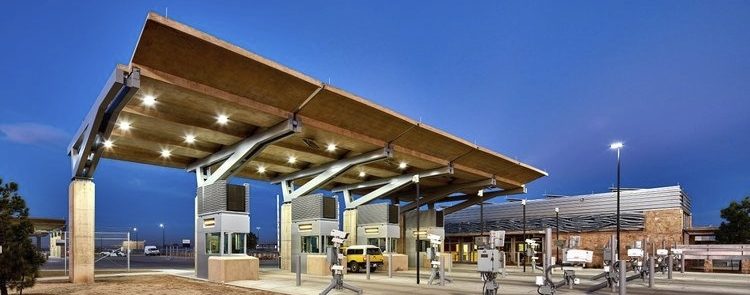Border infrastructure crucial to U.S. and Mexico economies

By Steve Rhoades
Border infrastructure is crucial to growing the economies of both the U.S. and Mexico, but the need for improved facilities to handle increased trade between the two countries is often overshadowed by immigration issues.
During the recent Society of American Military Engineers (SAME) Joint Engineer Training Conference, I attended the presentation, “Binational Infrastructure Opportunities in the Aftermath of the United States-Mexico-Canada Agreement.” The USMCA replaced the former North American Free Trade Agreement in 2020, and among the facts offered during the presentation, these really stood out:
- Since 1995, trade with Mexico has increased six-fold
- The U.S. sells more to Mexico than it does to Brazil, Russia, India, China, and South Africa combined.
- In 2019, Mexico was the largest trading partner for the U.S.
This growth in trade at our southern border means it’s critical to ensure that land ports of entry continue to evolve and modernize to facilitate this increasing quantity of cross-border commerce. Sustainable design practices are also important for minimizing environmental impacts on the often-remote sites.
Some of IMEG’s recent projects are supporting the increased capacity of cross-border commerce and the required security at U.S.-Mexico border facilities. These include:
- The Tornillo-Guadalupe Land Port of Entry in El Paso County, TX. This LEED Gold certified, six-lane border-crossing facility (pictured above) was expanded from just over eight acres to nearly 120 acres, making it one of the largest in the nation and capable of serving vehicular, pedestrian, and commercial traffic.
- The Columbus, NM Land Port of Entry . This facility was designed with significant sustainable features and enhanced security including photo-electric power from 43 roof monitors, multi-zone variable refrigerant HVAC, solar photovoltaic array, independent video surveillance, audio recording system, and a stand-alone intrusion detection system.
With the new USMCA trade agreement, nearly $1.9 billion in trade crosses the U.S.-Mexican border every day, and we in the engineering industry are proud to provide the infrastructure needed to help ensure safe and efficient operations at the border facilities. Through strong and collaborative partnerships with stakeholders on future projects we will continue to do our part to support the growing trade between the two countries.












